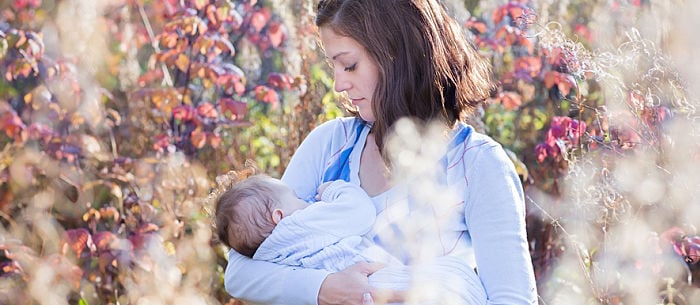Many nursing moms experience breast leaking as a normal, but often annoying, part of the nursing process. Though it’s almost always just a normal side effect of producing enough milk to feed your baby, leaking breasts are a nuisance that can get in the way of normal activities and lead to numerous changes of clothes. If you’re concerned about leaking, speak with your doctor or a lactation consultant, but in the meantime, a few simple steps can help you manage the problem. “For most moms, leaking breasts resolve over time,” says Leigh Anne O’Connor, an International Board Certified Lactation Consultant (IBCLC) and creator of Mama Milk and Me.
What’s Normal and What’s Not?
“In the early weeks postpartum, it’s common for a mom to have leaky breasts,” says Jennifer B. Greenberg, an International Board Certified Lactation Consultant (IBCLC). There’s also a wide range of what’s normal in terms of how much leakage occurs, adds O’Connor. Some moms don’t leak at all, some only leak a little when first starting breastfeeding and some moms continue to leak for the duration of nursing.
“During the first four to six weeks postpartum, the mom’s body regulates how much milk to produce for the baby based on supply and demand,” Greenberg notes. However, you should be concerned if your breasts continue to leak and your nursing baby isn’t gaining weight. If this is the case for you, contact your doctor and your baby’s pediatrician right away. Your baby might be tongue-tied or have some other problem that prevents him from nursing.
How to Manage Breast Leaking
Leaking usually occurs when your breasts are full. “Try not to miss a feeding or go longer between feeds to lessen the chances of leaking,” recommends Greenberg. Feed your baby on demand and your body will adjust to her nursing schedule so you’re less likely to leak. If your breasts begin to feel very full, try nursing even if it’s shortly before your baby’s usual eating time. There’s also no harm in waking your baby to nurse if your breasts are full and it’s close to a normal feeding time, O’Connor says. Many women will experience leaking in the opposite breast while they are nursing on the other side. If that occurs, “place a burp cloth or towel beneath this breast to absorb the leaking,” Greenberg suggests.
Breast Pads and Other Products
Breast pads are your best friend if you have leaking breasts, and there are numerous options when it comes to choosing the nursing pad that’s right for you, O’Connor says. Disposable nursing pads are quick and convenient and can easily be popped into your bra to absorb leaking breast milk. “Change the breast pads frequently so moisture isn’t up against your skin for long periods of time,” suggests Greenberg. Another option is to use reusable breast pads that you remove, clean and use again. O’Connor also recommends a product called Milkies. You wear Milkies inside your bra and they collect the milk that leaks so you can still feed it to your baby.
In most cases, although it’s annoying, breast leaking is easy to manage. Just remember, as Greenberg advises, to “carry an extra shirt in your baby’s diaper bag as a back-up.”
If you are looking for an extra set of hands with your new baby, hire a caregiver on Care.com.
Sara Ipatenco is an elementary school teacher turned stay-at-home mom and freelance writer. Ipatenco holds bachelor’s and master’s degrees, both in child development and elementary education. Ipatenco has been published in “Teaching Tolerance” and “Family Fun” magazines.






